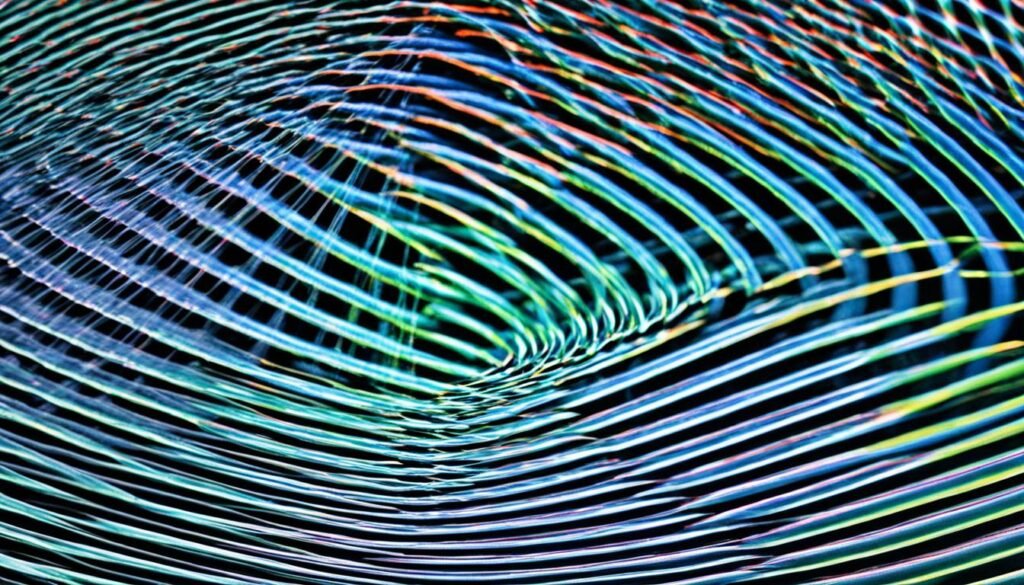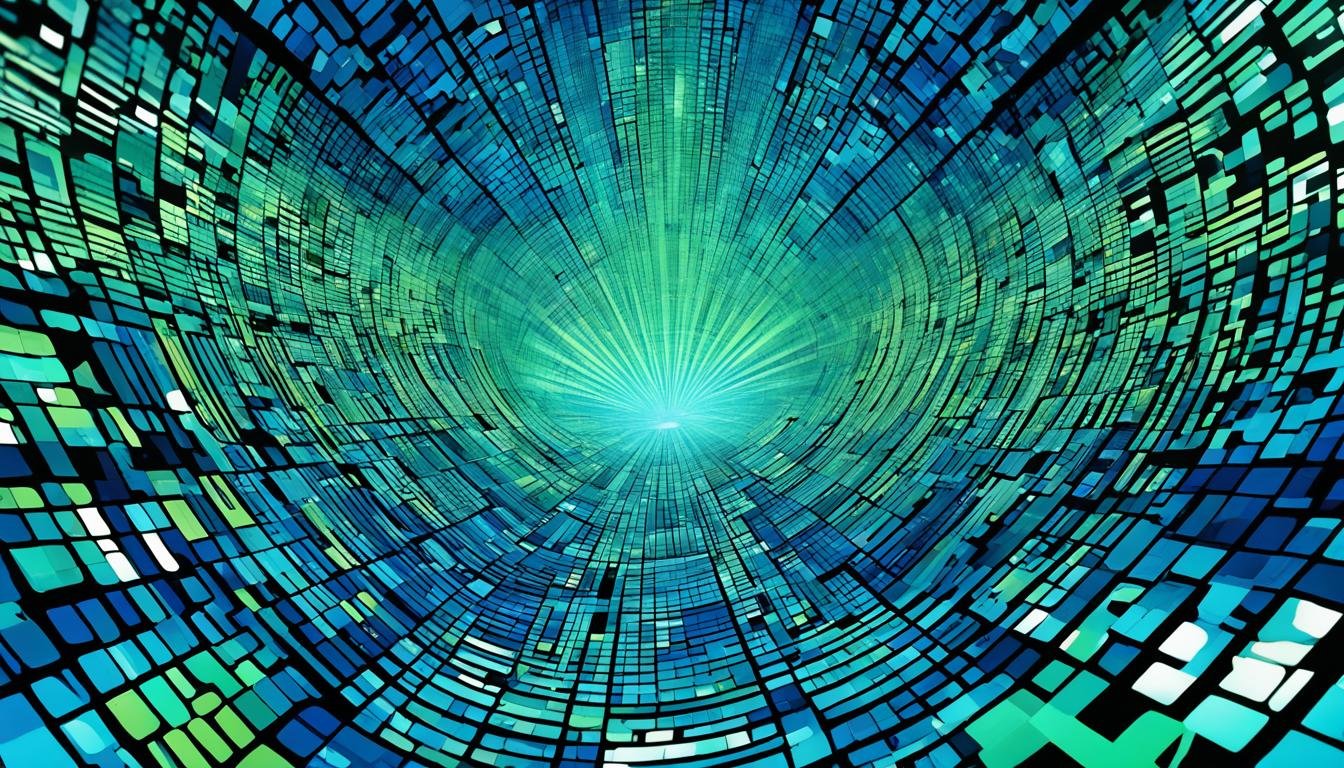The Matrix 5 is generating immense buzz and anticipation among fans as the next installment in this iconic franchise draws closer. This highly anticipated movie is set to push the boundaries of our understanding of reality and consciousness with its groundbreaking theories and mind-bending concepts. In this article, we will delve into three captivating theories surrounding Matrix 5 and share five compelling reasons why you should be eagerly excited about its release.
But first, let’s take a moment to revel in the anticipation of this monumental film by diving into the intriguing theories that promise to astound and captivate audiences.
Table of Contents
ToggleKey Takeaways:
- Matrix 5 is generating immense buzz and anticipation among fans.
- The movie promises to push the boundaries of reality and consciousness.
- We will explore three captivating theories surrounding Matrix 5.
- There are five compelling reasons to be excited about the release.
- The Matrix franchise continues to captivate audiences with its fascinating concepts.
Now that we have a glimpse into what awaits us with Matrix 5, let’s embark on a journey exploring the mind-bending theories and exciting possibilities that lie ahead. Get ready to venture into the next code and expand your understanding of the Matrix universe.
The Two-Slit Experiment: Unlocking the Dual Nature of Light
The two-slit experiment is a fascinating cornerstone of quantum physics that delves into the intricate nature of light and particles. It challenges our conventional understanding of reality by demonstrating that particles, such as light, can exhibit both wave and particle characteristics simultaneously.
This experiment involves shining a light through two narrow slits onto a screen and observing the resulting pattern. Surprisingly, instead of forming two distinct bands of light, the experiment produces an interference pattern, similar to what would be expected from two overlapping waves. This phenomenon implies that light behaves as both a wave and a particle, defying our classical notions of reality.
The implications of the two-slit experiment extend beyond the realm of physics. It raises thought-provoking questions about the profound relationship between the observer and the observed. This concept is known as the observer effect, which suggests that the act of observation itself can influence the behavior of particles and shape the reality we perceive.
By observing the two-slit experiment, we not only gain insight into the properties of light but also challenge our understanding of existence itself. The experiment highlights the enigmatic wave-particle duality, blurring the boundaries between the microscopic and the classical world.
âIt is not nature that knows the behavior of photons, electrons, and atoms; it is we, human beings, who know.â – Richard Feynman
This profound experiment continues to captivate scientists and philosophers alike, igniting discussions about the fundamental nature of reality and the intricate relationship between consciousness and the fabric of the universe.

Wave-Particle Duality:
The wave-particle duality is a fundamental principle in quantum mechanics that suggests that particles can behave as both waves and particles. This concept challenges the classical view that objects exist exclusively as either particles or waves. The two-slit experiment is a compelling demonstration of this duality, revealing the complex nature of light and particles.
The Observer Effect:
The observer effect is the idea that the act of observation can influence the behavior of particles. In the context of the two-slit experiment, the presence of an observer or measurement device affects the outcome, suggesting an inherent connection between consciousness and the nature of reality.
Quantum Entanglement: The Unexplainable Connection
Quantum entanglement is a fascinating occurrence that challenges our understanding of the physical world. It is a phenomenon where two particles become correlated in such a way that their properties are intrinsically linked, regardless of the distance between them. This interconnectedness defies the classical notion of locality, where objects can only influence each other when they are in close proximity.
The concept of quantum entanglement raises profound questions about the nature of reality and the fundamental laws of physics. How can two particles communicate instantaneously, even when separated by vast distances? The implications of this mysterious phenomenon transcend traditional physical boundaries and hint at a deeper web of interconnectedness.
“Spooky action at a distance,” as Albert Einstein famously described quantum entanglement, captures the enigmatic nature of this connection.
One of the most captivating aspects of quantum entanglement is its potential relationship to the simulation hypothesis. This hypothesis suggests that our reality may be a complex computer simulation, controlled by a higher intelligence or advanced civilization. Quantum entanglement could be seen as evidence supporting this idea, as it implies that our universe is intricately intertwined and governed by underlying rules that we have yet to fully comprehend.
As scientists continue to delve into the mysteries of quantum entanglement, they are uncovering new layers of complexity and raising even more profound questions. Are entangled particles merely a glimpse into a vast network of interconnected entities? Is the interconnectedness of quantum systems a reflection of a broader interconnectedness in the fabric of reality itself?
The EPR Paradox
In 1935, Einstein, Podolsky, and Rosen proposed a thought experiment known as the EPR paradox to challenge the completeness of quantum mechanics. The experiment involved two entangled particles and showcased the counterintuitive nature of quantum entanglement. It highlighted the instantaneous communication between entangled particles, leading to the famous phrase “spooky action at a distance.”
To better understand the concept of entanglement, let’s consider a hypothetical scenario involving two particles: Particle A and Particle B. When these particles become entangled, their states become intertwined, regardless of their spatial separation.
Here is a table illustrating the potential states of two entangled particles:
| Particle A | Particle B |
|---|---|
| Spin up (+1) | Spin down (-1) |
| Spin down (-1) | Spin up (+1) |
According to the laws of quantum mechanics, the states of entangled particles are indeterminate until measured. However, when one particle’s state is measured and determined, the other particle’s state instantaneously collapses to the opposite state, regardless of the distance between them. This strange phenomenon has been observed in numerous experiments and remains a subject of ongoing research and exploration.
Quantum entanglement challenges our understanding of reality and invites us to consider the possibility of a simulated universe. If our reality is indeed a simulation, quantum entanglement could be seen as a manifestation of the underlying code or interconnectivity within the simulated framework.
As we unravel the mysteries of quantum entanglement, we continue to push the boundaries of knowledge and contemplate the nature of existence itself. The intertwined nature of entangled particles hints at a profound interconnectedness that reaches beyond the limitations of our current understanding. Whether quantum entanglement is a product of a simulated reality or an inherent characteristic of our universe, it remains a captivating field of study with endless implications for our understanding of the cosmos.
Glitches in the Matrix: Exploring Unexplained Phenomena
The Mandela Effect, a collective misremembering of significant events, has sparked intriguing speculation about glitches in a simulated reality. This phenomenon involves a shared experience where a large group of people remembers an event or detail differently than what historical records or evidence suggest. The consistent nature of these misrememberings raises questions about the malleability of our perceived world and the possibility of simulated realities.
The Mandela Effect can be attributed to several factors, such as cognitive biases and the fallibility of memory. Our brains are prone to creating false memories and filling in gaps based on our existing beliefs and experiences. However, the effect itself has captured public attention and opened up fascinating discussions about the nature of reality and the limitations of human perception.
Mandela Effect Examples
“Luke, I am your father.”
This iconic misquote from the Star Wars franchise is a classic example of the Mandela Effect. Many people remember Darth Vader saying, “Luke, I am your father,” in the movie. However, the actual line is, “No, I am your father.” The widespread misremembering of this quote has become a prime example of how the Mandela Effect manifests in popular culture.
Curious George’s tail
In countless childhood memories, Curious George, the beloved children’s book character, is depicted with a long, swaying tail. However, Curious George does not have a tail in any of the original books. The collective misremembering of this detail highlights how the Mandela Effect can affect even the most cherished childhood memories.
Furthermore, the rise of social media platforms has accelerated the exploration of unexplained phenomena and inconsistencies in our reality. One notable example is the “Glitches in the Matrix” trend on TikTok. Creators on this platform capture and share moments that seem to defy logic or challenge our understanding of the world. These videos easily go viral, sparking conversations about simulated realities and the nature of our existence.
It’s important to note that while these phenomena and trends can be intriguing, they often have rational and logical explanations. Cognitive biases, flawed memory, and the complexity of the human mind can account for many of these collective misrememberings. However, they serve as a reminder that our understanding of reality is subjective and shaped by our individual experiences.

As we delve deeper into the mysteries of the Mandela Effect and explore the unexplained occurrences around us, it becomes clear that the boundaries of our perception are not as steadfast as they seem. These phenomena remind us to remain open-minded and continually question the nature of reality. Whether these glitches in the matrix are genuine anomalies or simply the result of human fallibility, they offer us a fascinating glimpse into the intricacies of the human mind and the complexities of our existence.
Conclusion
Matrix 5 is set to revolutionize our understanding of reality, offering mind-bending theories and captivating concepts that will leave you in awe. With its release just around the corner, the anticipation surrounding Matrix 5 is palpable, and for good reason. Whether you’re a die-hard fan of the franchise or simply intrigued by the profound ideas it presents, Matrix 5 is a must-see.
Through its exploration of consciousness, simulated realities, and the interconnectedness of our universe, Matrix 5 takes us on an exhilarating journey into the unknown. Prepare to have your perceptions shattered and your mind expanded as you dive deep into the next code.
Don’t miss your chance to experience the awe-inspiring world of Matrix 5. Immerse yourself in a realm of infinite possibilities by purchasing Matrix 5 today. With its groundbreaking concepts and mind-blowing visuals, Matrix 5 is set to be a game-changer in the world of cinema. Stay ahead of the curve and embrace the future – buy Matrix 5 now and be a part of the phenomenon!
FAQ
What is Matrix 5?
Matrix 5 is the highly anticipated next installment in the iconic Matrix franchise.
What are the mind-bending theories surrounding Matrix 5?
Matrix 5 explores three captivating theories including the two-slit experiment, quantum entanglement, and the Mandela Effect.
What is the two-slit experiment?
The two-slit experiment is a cornerstone of quantum physics that reveals the dual nature of light and particles, challenging classical notions of reality.
What is quantum entanglement?
Quantum entanglement is a phenomenon where two particles become correlated, even when separated by great distances, hinting at a web of interconnectedness that transcends traditional physical boundaries.
What is the Mandela Effect?
The Mandela Effect refers to a collective misremembering of significant events, sparking speculation about glitches in a simulated reality.
Why should I be excited about Matrix 5?
Matrix 5 pushes the boundaries of our understanding, redefines our perception of reality, and offers a captivating exploration of consciousness, simulated realities, and the interconnectedness of our universe.
How can I buy Matrix 5?
Don’t miss the opportunity to experience Matrix 5 – buy it now and immerse yourself in a world of infinite possibilities.
- How Terry Crews and Rebecca King-Crews Redefined Relationship Goals - 3 January 2025
- Angel Reese’s New Year’s Eve Outfit 2025: A Fashion Statement to Remember - 3 January 2025
- Angelina Jolie Net Worth: $120 Million Empire-Movies, Mansions, and More - 31 December 2024

